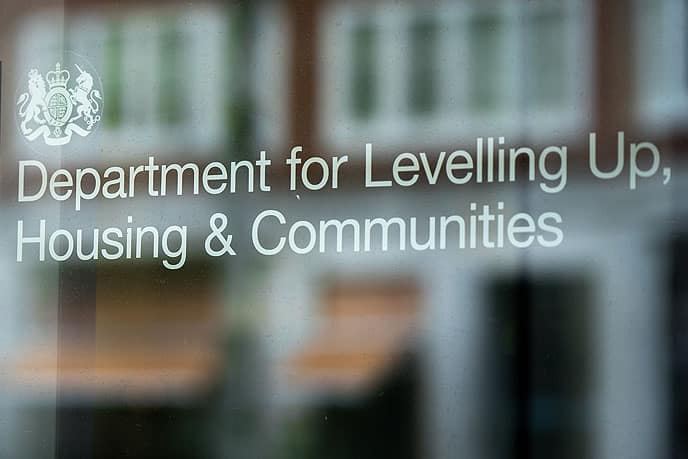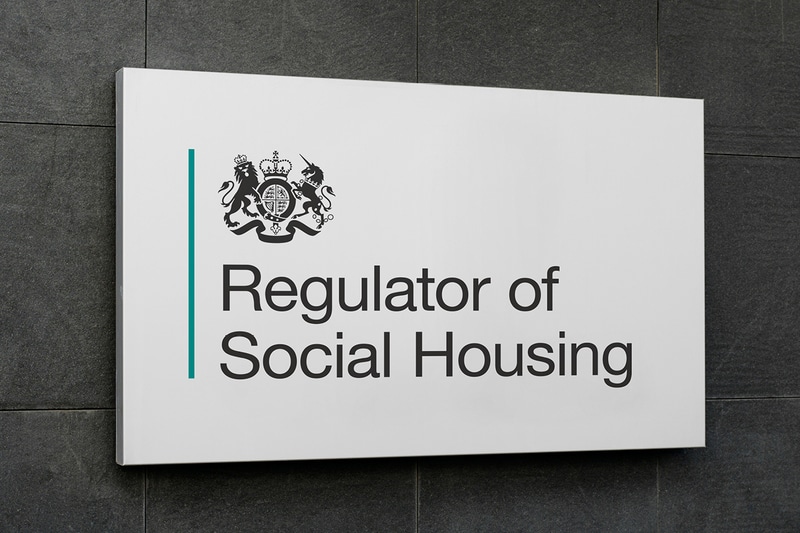This Month In Social Housing: October 2023
The end of the year is approaching seemingly at breakneck speed, conveniently signposted by the clocks going back, the leaves turning a sombre shade of amber and liberating themselves from the trees, and the incoming of a distinct crispness to the morning air. In the hectic world of social housing though, the final quarter doesn’t herald a slow-down and, for many of us, October has been as jam-packed as the nine months preceding it. If you’ve not had the chance to keep on top of all the happenings withing the sector this past 30 or so days then worry not as we’re about to bring you another round-up of the top five social housing news stories in This Month In Social Housing…

Awaab’s Law Consultation Launched by DLUHC
The Department for Levelling Up, Housing and Communities (DLUHC) has initiated a consultation on a crucial part of Awaab’s Law, aimed at enhancing tenants’ rights and complaint processes. The proposal requires landlords to furnish tenants with information regarding their rights and complaint procedures, ultimately empowering tenants to hold their landlords accountable. The government estimates an initial cost of £4.9 million to the housing sector. Additionally, councils and housing associations will be legally obligated to inform tenants about regulatory requirements that pertain to their living conditions, such as the Decent Homes Standard. The proposed changes are subject to further consultation, with the aim of ensuring that tenants are well-informed and can assert their rights effectively. The Regulator of Social Housing will assess social landlords’ compliance with these requirements. The consultation is open until November 22, 2023.

Starmer’s Plan for 1.5m Homes Welcomed by Housing Sector
Sector leaders have welcomed the pledge made by Labour leader Sir Keir Starmer to overhaul the planning system and deliver 1.5 million homes in the next parliamentary term. Starmer’s proposal, delivered at the Labour Party Conference in October, aims to “build a new Britain” by addressing what he views as a “restrictive” planning system hindering housing construction. The plan includes devolving planning and building powers to towns and cities to boost economic growth and prioritise local input on housing projects. He also introduced the idea of a “planning passport” for brownfield development, speeding up approvals for high-density urban housing. Sector bodies have praised the plan as a bold response to the housing crisis; “The housing crisis needs bold and ambitious action to address it, so we really welcome the announcements by Sir Keir Starmer today to tackle it head on with a housing recovery plan which reflects many of the asks in our housing manifesto” said Gavin Smart, chief executive of CIH. Kate Henderson, chief executive of NHF said: “Building new towns provides the opportunity to create high-quality places with ambitious sustainability standards, much-needed affordable homes and better use of infrastructure”.

Gove: “No Government Funding for Removal of RAAC in Social Housing”
Housing Secretary Michael Gove has confirmed that social landlords will bear the cost of removing potentially hazardous reinforced autoclaved aerated concrete (RAAC) in their properties, with no government funding available for this purpose. In a letter to Clive Betts, chair of the Levelling Up, Housing and Communities Committee, Gove stated that landlords must use rental income to fund RAAC removal if it is identified in their buildings. While acknowledging that RAAC might exist in a limited number of residential structures constructed between 1950 and 1990, Gove noted that there have been no reported RAAC failures in residential buildings. The government’s advice on RAAC has evolved over time, with recent guidance focusing on identifying and assessing structural adequacy. Gove emphasised that building owners must take a risk-based and evidence-led approach when addressing RAAC issues, following guidance from the Institution of Structural Engineers. Although the Regulator of Social Housing has noted that RAAC is not widespread in social housing, it encourages landlords to identify and address RAAC components when necessary.

New CIH President to Drive Professionalisation Across Sector
The new president of the Chartered Institute of Housing (CIH), Jill Murray, has launched a campaign called “Be EPIC,” designed to encourage the housing sector to embrace mandatory qualifications and focus on professionalisation. Murray, formerly the CEO of Byker Community Trust, plans to use her year-long tenure to promote job opportunities within the industry. “Be EPIC” stands for “be educated, professional, in control, and be CIH by becoming a member.” The campaign aims to emphasise the competencies required for housing professionals and the importance of combining technical and personal skills with continuous learning and hard work. This initiative aligns with the Social Housing (Regulation) Act, which mandates qualifications for managers and new competency standards. Murray’s campaign also focuses on supporting Action for Children, a charity dedicated to helping vulnerable children and families in the UK. Gavin Smart, CEO of CIH, said the campaign “comes at a time when housing is being recognised as a profession of importance, highlighting need for us to invest in our own learning and development to continually evolve as housing professionals”.

RSH Data Indicates Slowdown in Yearly Loss of Social Homes
The latest data from the Regulator of Social Housing (RSH) shows a slowdown in the annual loss of social rent homes in the housing sector for the 2022-23 financial year in England. The data reveals a decrease of more than 6,000 social rent homes by the end of March 2023, which is an improvement from the previous year when the loss was nearly 10,000. The sector comprises 1,606 providers, including 221 local authorities and 1,385 registered providers, offering approximately 4.5 million homes across England. Housing associations own 2.9 million of these homes, while local authorities possess 1.6 million. There was a net increase of nearly 34,000 social homes in 2022-23, driven by the construction of around 26,000 new affordable rent homes and an increase of over 14,000 low-cost homeownership properties. Housing associations accounted for the majority of the new homes built in the sector, contributing to 87% of the total increase in affordable rent and 98% in low-cost homeownership. The sector’s tenure composition consists of 83% social and affordable rent, 11% supported housing, and 6% low-cost homeownership. The RSH’s statistics underscore the ongoing construction and acquisition of much-needed social homes across England, emphasising the importance of high-quality data for strategic decision-making, especially regarding rents and housing conditions.
That’s another one of our handy news round-ups done and dusted for the month. We’re all off to contemplate putting the central heating on for the first time this year whilst simultaneously trying not to eat all the Haribos we bought ostensibly to placate trick of treaters (but which deep down we really got in for our gluttonous selves). We will however be back again on these very pages at the same time next month to do this all over again, so please do join us. Until then though, adios!
- Staff Spotlight: Jack Pawson - July 23, 2024
- This Month In Social Housing: June 2024 - June 28, 2024
- Customer Success Snapshot: London Borough of Barking & Dagenham - June 21, 2024